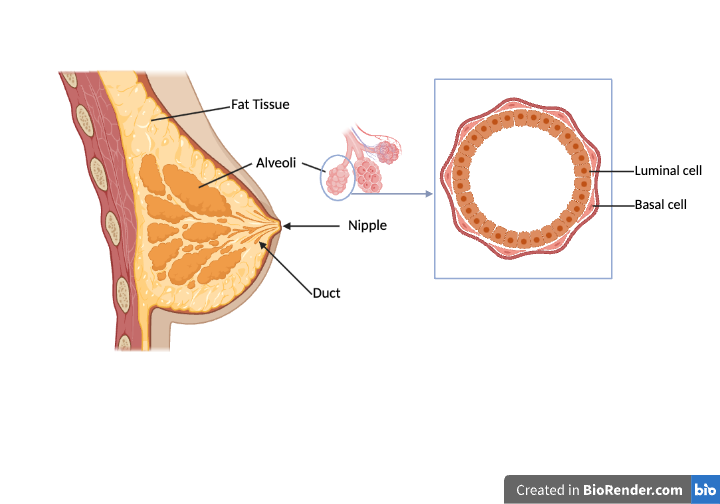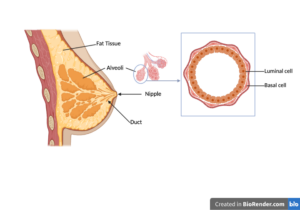New study links the community of viruses in our gut to early pancreatic cancer development – a potentially lifesaving discovery.
With a mortality-to-incidence ratio of over 90%, pancreatic cancer (PC) is among the most deadly forms of cancer. Since its early stages often bear no distinct symptoms, the disease grows stealthily until it’s too late. What’s more? Scientists foresee a near 100% increase in PC deaths, from 466 000 in 2020 to over 800 000 by 2040. To avert this grim future, researchers strive to develop methods for earlier detection, and subsequent earlier treatment. A 2022 study at the University of Tokyo linked PC to changes in gut microbiome composition. This has directed gastroenterologists’ focus to the microbiome in the search for new diagnostic tools.
The gut microbiome is often understood as the community of bacteria living in symbiosis with our digestive tract. Bacteria, like E. coli, break down our food in exchange for a safe habitat. However, bacteria do not aid our digestion for brownie points. As evolving creatures, they constantly test the limits of our gut ecosystems. As far as we understand, that’s where viruses come in; they regulate the bacterial population in our guts. The microbiome, therefore, consists of not only bacteria but also viruses. All viruses together make up our body’s virome.
An imbalance of bacteria and viruses has previously been observed in PC patients and is believed to be a factor in PC development. For example, the bacterium Roseburia intestinalis is significantly less abundant in the guts of PC patients compared to healthy individuals. This particular bacterium produces a cancer-inhibiting metabolite called butyrate, a substance that limits cancer development by suppressing inflammation and reducing the expression of genes involved in tumor cell growth. Other bacteria produce cancer promoting-metabolites, like lipopolysaccharide (LPS). This substance activates our immune system in the presence of pathogens, but also stimulates inflammation, and therefore, promotes cancer growth in the process. The balance of bacteria producing these two kinds of metabolites depends on the virome’s composition. Therefore, if we could identify the gut viruses causing imbalances, we might be able to diagnose patients earlier.
Researchers at Xi’an Jiaotong University took on this hypothesis when they performed a study that compared PC patient viromes to those of healthy individuals. They sequenced the DNA of 183 fecal samples from a Spanish and a German cohort with 101 PC patients and 82 healthy individuals. After sequencing the samples, they filtered out human DNA by comparing the sequenced DNA to an established human reference genome. They then used viral references to compare viral DNA from the samples to known viruses. After statistical analyses confirmed significant difference between the PC patient group and the healthy group, they identified which viruses were present in the PC patients’ guts, and how those differed from the ones found in healthy individuals. As pancreatic cancer severity increased, virome diversity decreased in PC patients. Additionally, the viruses present in the affected individuals targeted different bacteria compared to the gut viruses found in healthy individuals, offering a potential explanation for the relationship between unbalanced microbiomes and cancer growth.
Using their results, the researchers created models to differentiate PC patients from healthy individuals. These models succeeded with 87.9% accuracy. Though these findings do not offer the ultimate solution to late PC diagnoses, access to virome information could be used as a diagnostic tool in addition to the tools currently available. Namely, a viral DNA sequencing-based tool could identify the specific viral biomarkers linked to pancreatic cancer. In the future, at risk groups for PC might, therefore, be asked to supply fecal samples for gut virus analysis during routine check-ups. In the case that PC-linked biomarkers show up, these at-risk groups could be provided early treatment, potentially saving their lives.
Sources:
Miyabayashi, K., Ijichi, H., & Fujishiro, M. (2022). The Role of the Microbiome in Pancreatic Cancer. Cancers, 14(18), 4479. https://doi.org/10.3390/cancers14184479
Zhang, P., Shi, H., Guo, R., Li, L., Guo, X., Yang, H., Chang, D., Cheng, Y., Zhao, G., Li, S., Zhong, Q., Zhang, H., Zhao, P., Fu, C., Song, Y., Yang, L., Wang, Y., Zhang, Y., Jiang, J., & Wang, T. (2024). Metagenomic analysis reveals altered gut virome and diagnostic potential in pancreatic cancer. Journal of Medical Virology, 96(7). https://doi.org/10.1002/jmv.29809
Cover image by magicmine, https://stock.adobe.com/search?k=pancreas+cancer&asset_id=343535067


